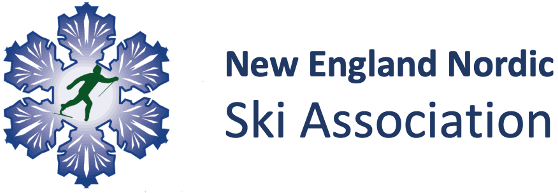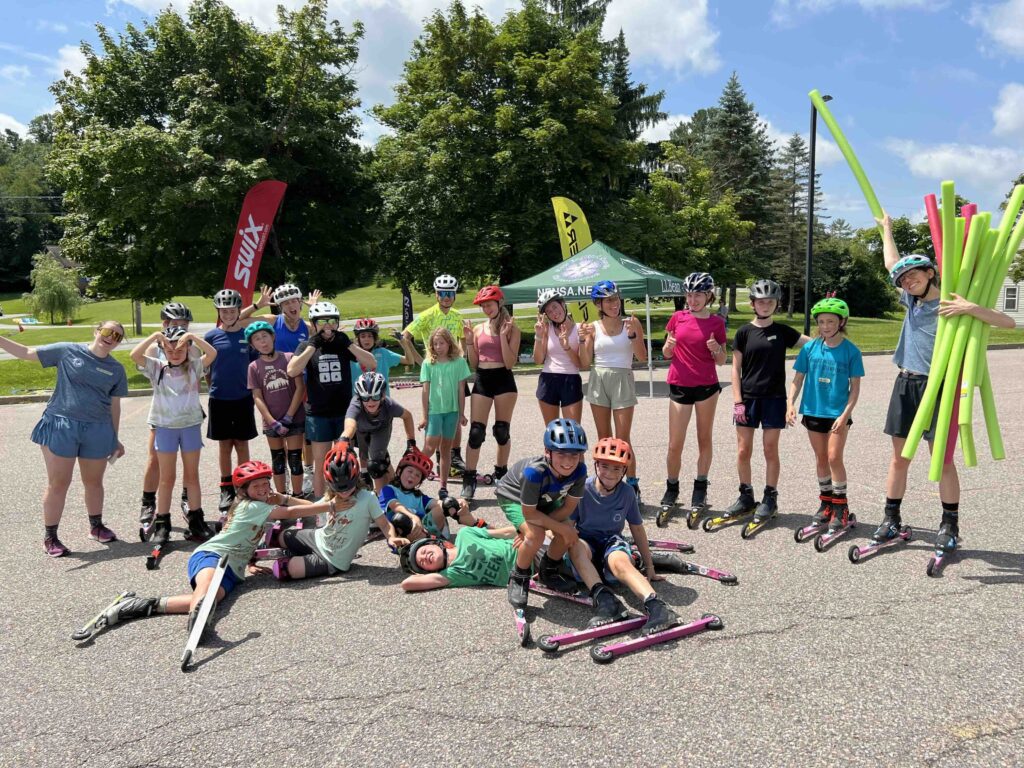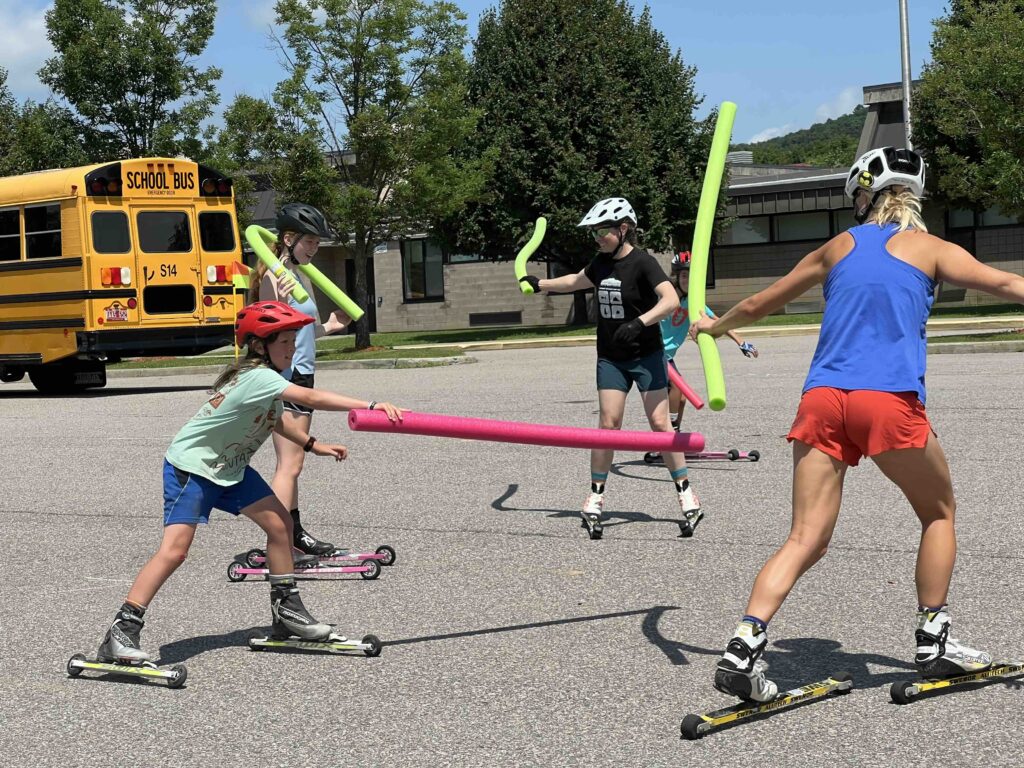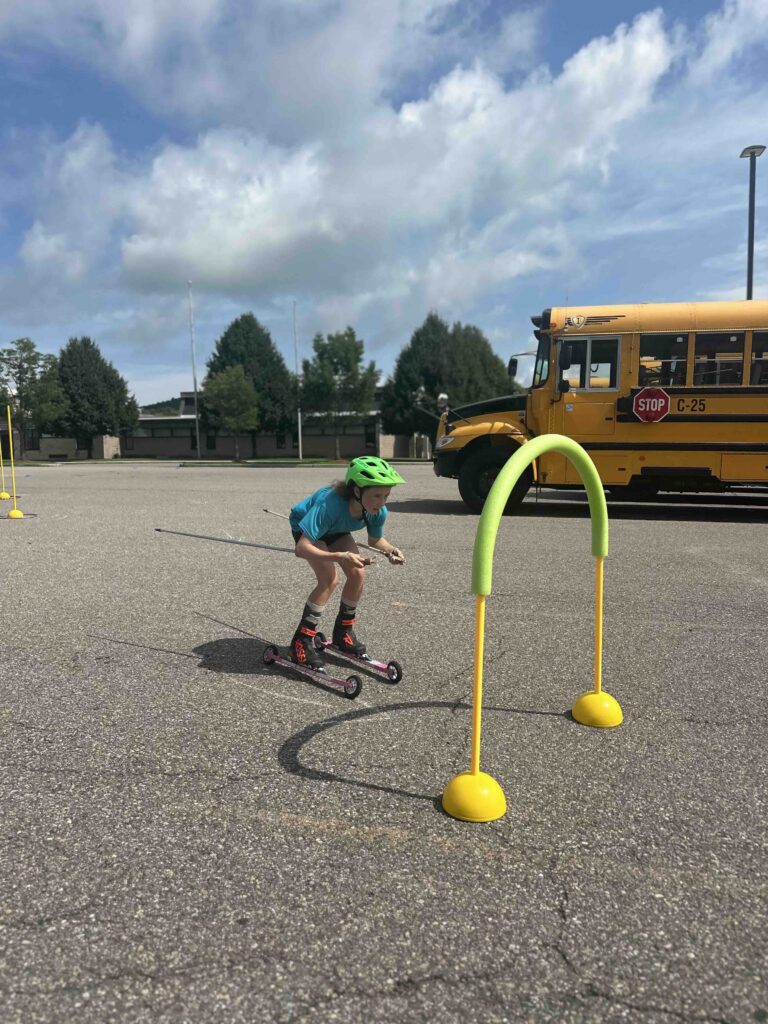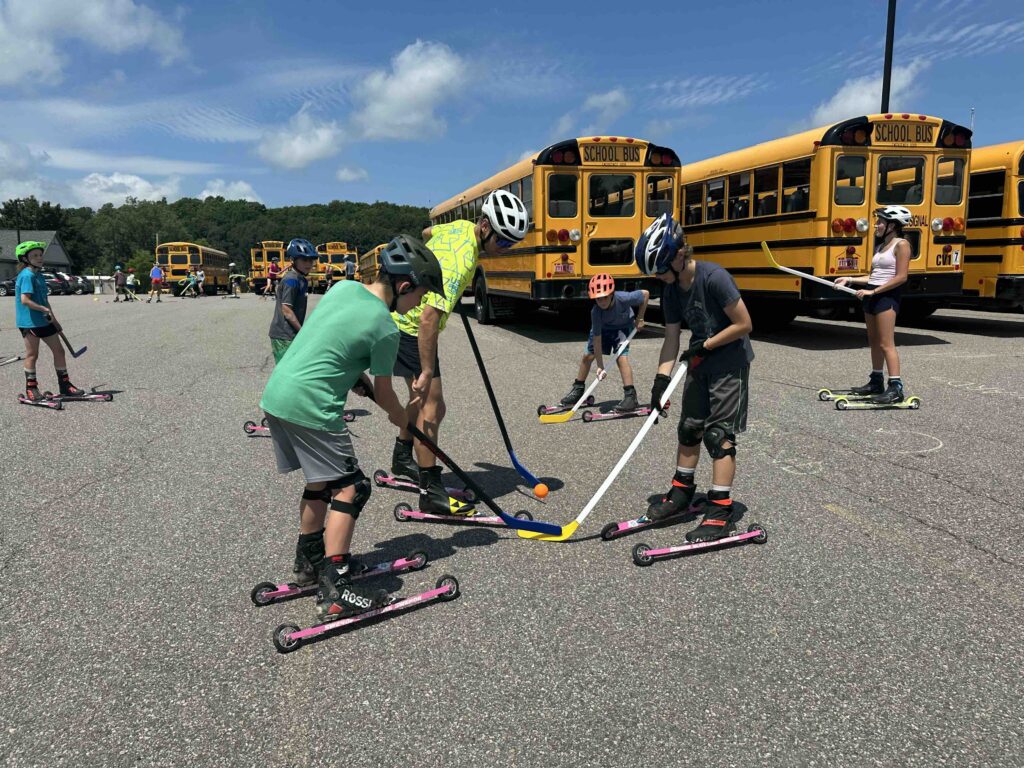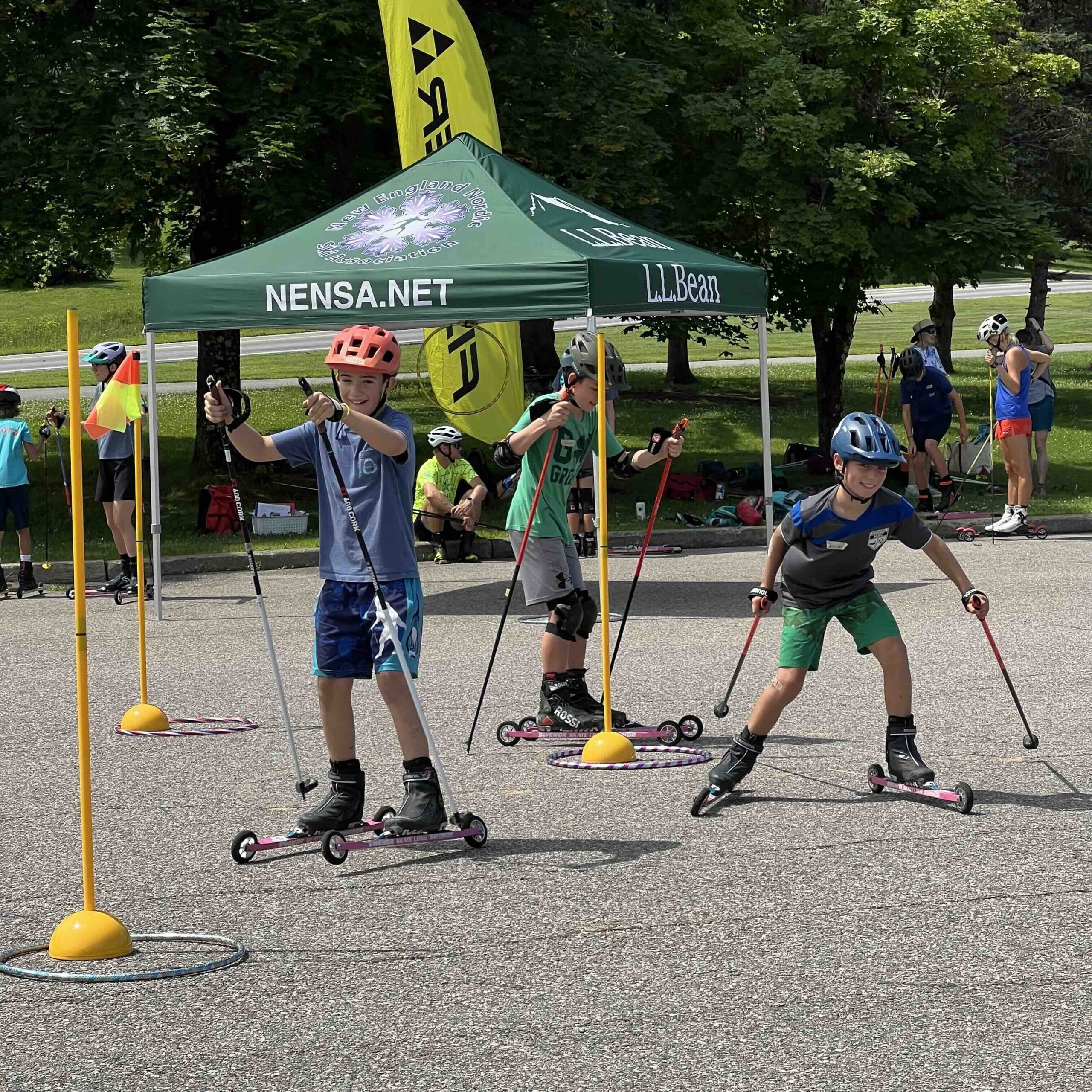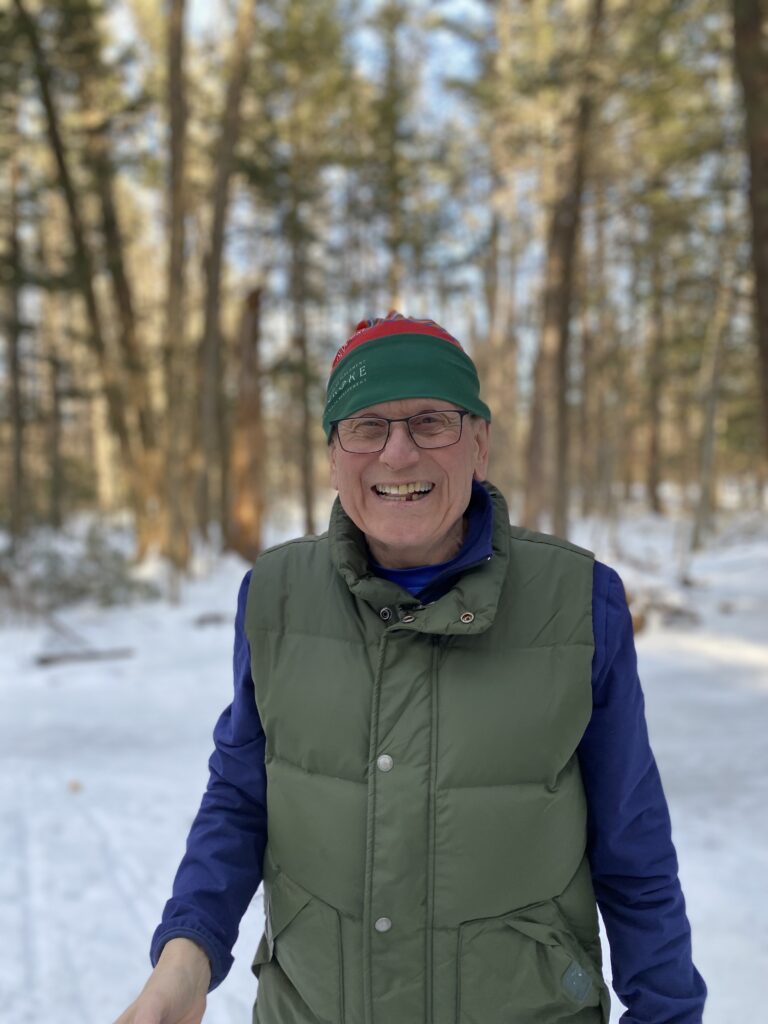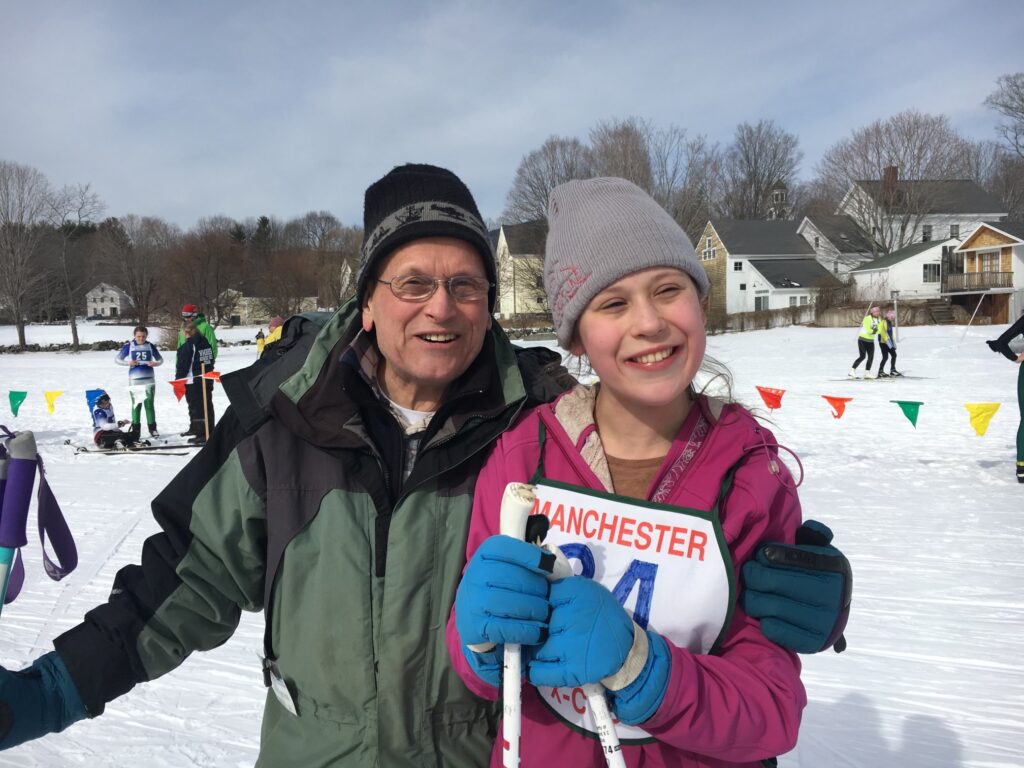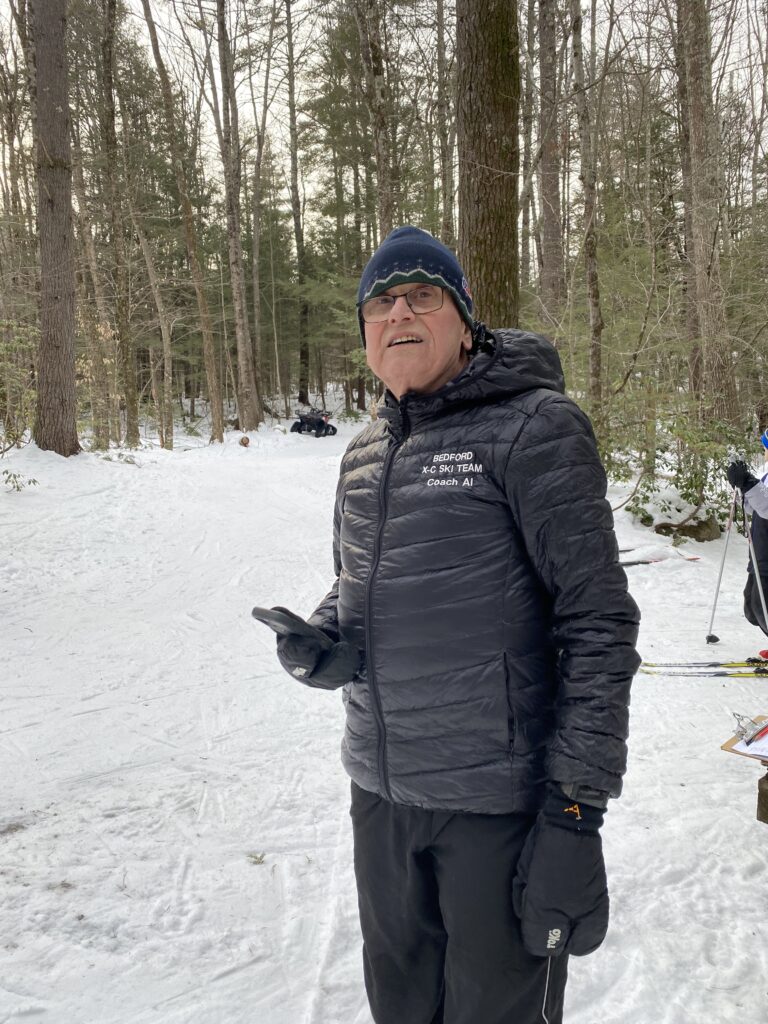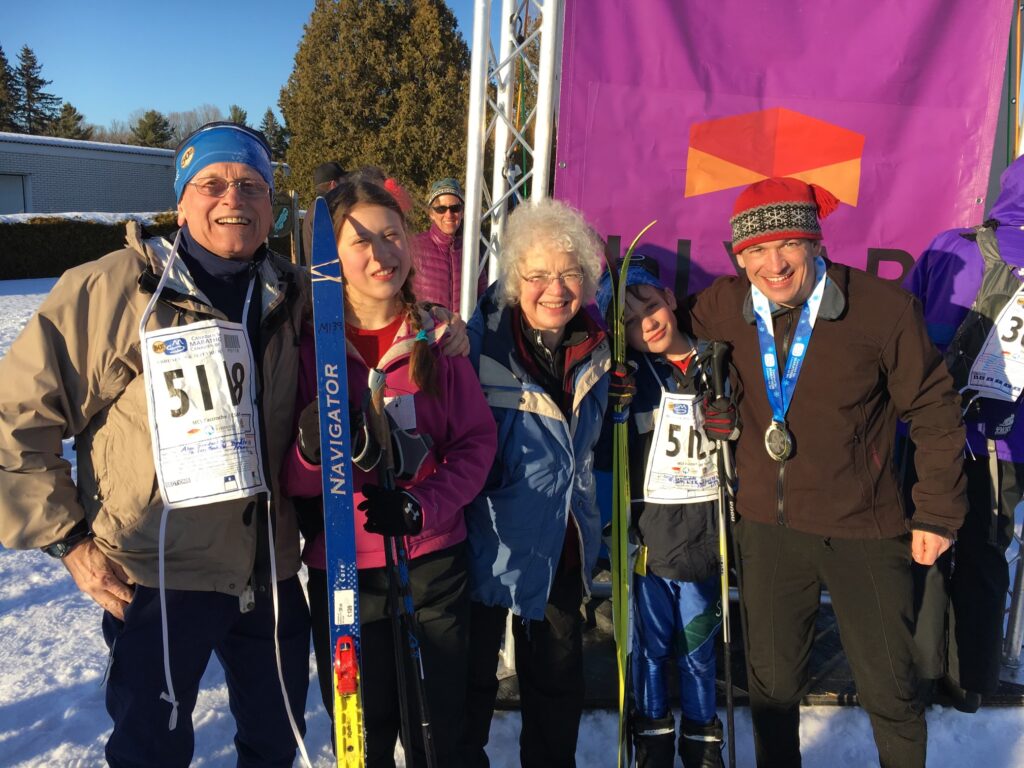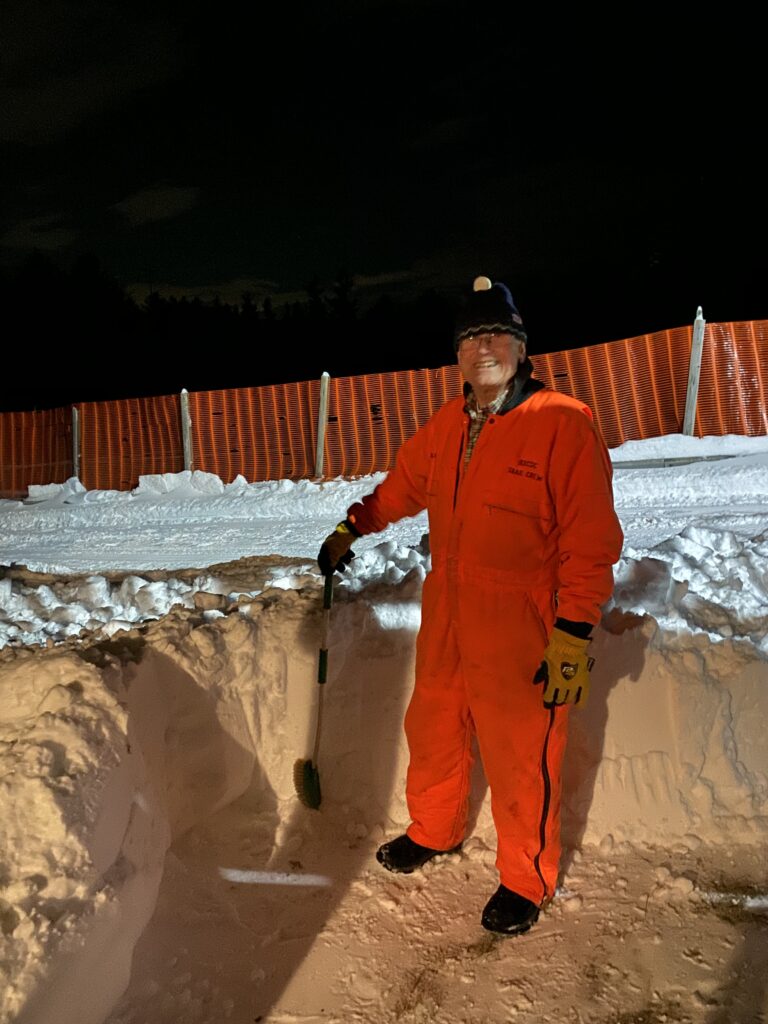The NENSA Coach of the Year award is given annually to honor a NENSA coach for their achievements and contributions in working with athletes in support of NENSA’s mission to sustain a vibrant and active cross country skiing community in New England. We are thrilled to share that Emily Cartwright of Nonstop Nordic is the 2024 NENSA Coach of the Year!
Emily’s impact on the Southern Maine ski community cannot be understated. Nonstop Nordic began in 2020, and has grown to include youth, juniors, and masters skiing opportunities, a full events calendar, and a team of fantastic coaching staff in just 4 short years. Club growth is no small feat, and it does not happen by chance, but rather through the dedication and vision of the local nordic community and leadership. Not only has Emily taken on the role of club founder and coach, but has also stepped into event management as well with both summer and winter event offerings. In addition to serving her own club, she has volunteered over many years to help lead Team Maine at Eastern High Schools and U16 Championships. With Emily’s leadership, Nonstop Nordic skiers can be found at all of our NENSA events, from popular races to Eastern Cups to our summer rollerski series.

Dave Chalmers, community member “thinks everyone who meets her is immediately impressed by the mix of fun, intensity, technique and passion that she brings to the table 24/7 year round. It feels like Emily has single-handedly revitalized the Nordic ski community around Southern Maine with clinics, race organization and selfless energy.”
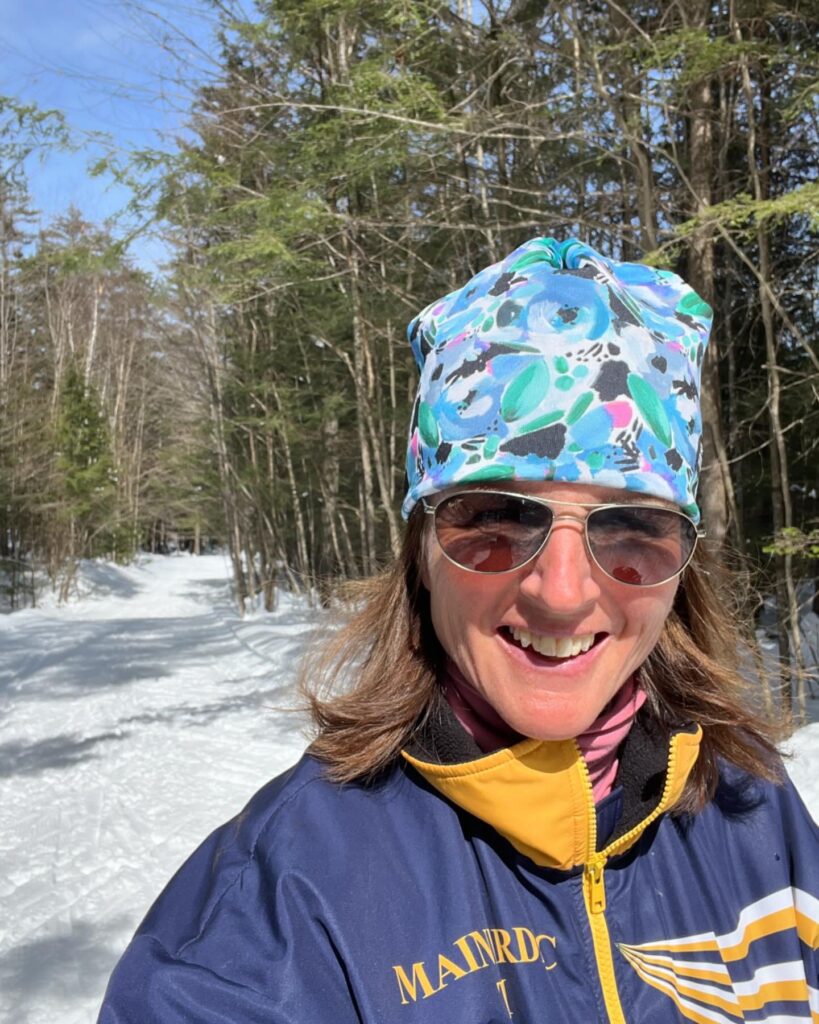
“What Emily Cartwright has done for skiing in Southern Maine, and Maine in general, is nothing short of incredible. Her tireless work to get programming going, keep people of all ages engaged and put Maine Skiing first is beyond admirable. Emily doesn’t take no for an answer and always finds, or makes, a solution to every problem or roadblock put in her way. I always say if you want something done completely and correctly, put Emily on it and don’t think about it again. She cares about every aspect of the sport, and more importantly, every person involved in the sport. She is a tireless worker and organizer who has brought skiing to all ages and levels in Southern Maine and we are way beyond lucky to have her. No one is more deserving of this award. Period.” Roger Knight, BNS East
Emily works in both the club skiing and scholastic skiing leagues, and encourages her athletes to engage with both. Emily’s work has revitalized the overall ski community in the Southern Maine region.
John Waterman notes that “Emily is a champion of nordic skiing here in Maine. I know no better example of someone who has enriched their community by sharing what they love. Emily is more than a coach, she is a force of nature.”
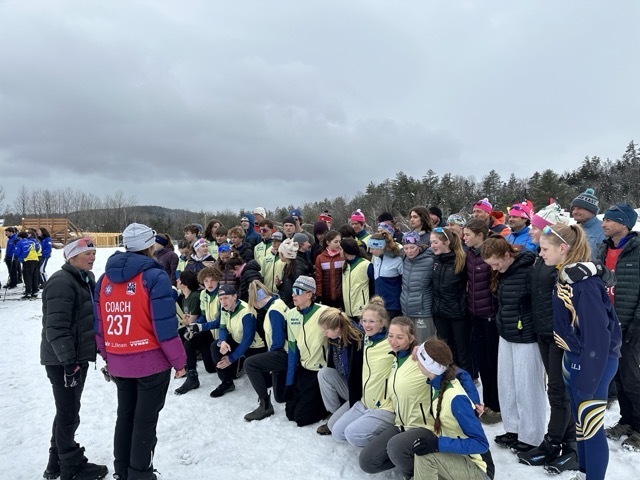
Dana Hatton, who has coached alongside Emily at U16 Championships and Eastern High Schools notes that “she is very deserving of this award. She never says no to anything related to skiing; the biggest or the smallest of tasks, she gets them done. She’ll always try to make the experience the best possible for the kids, whether that’s during practice or at a ski race. It’s been great seeing Nonstop Nordic grow so much in such a short time.”
Congratulations to Emily for her tireless work with her athletes and community members! NENSA is incredibly grateful to count Emily as part of our ski community, and thrilled to honor her years of hard work!
